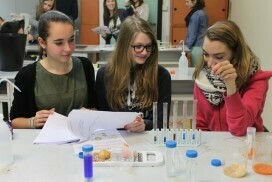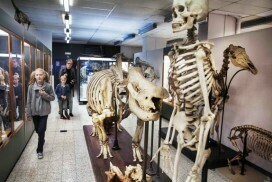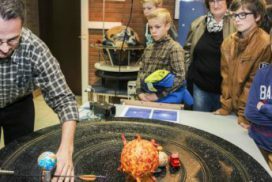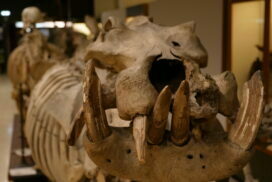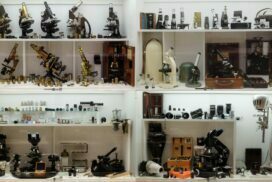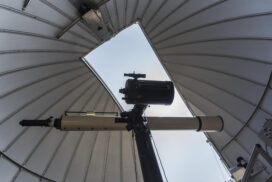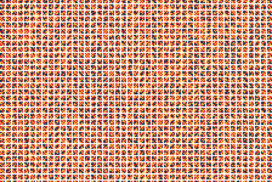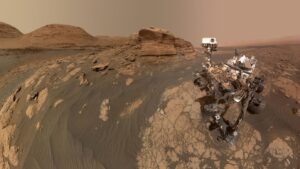Mars,the red planet
Author: Pepijn Demol
Type: Telluric (Earth-like planet)
Rotation: 24.6 hours (~ 1 Earth day)
Revolution: 687 Earth days (~ 2 Earth years)
Elliptical orbit: about 228 million kilometers from the sun (~ 1.5 the Earth-Sun distance)
Radius: 3400 km (about half the size of Earth)
Surface Gravity: 38% of Earth’s gravity. A person of 50 kg would weigh just 19 kg.
Main composition: Iron, nickel and sulfur. Iron oxide (rust) covers the surface.
Main satellites: two small potato-shaped moons named Phobos and Deimos
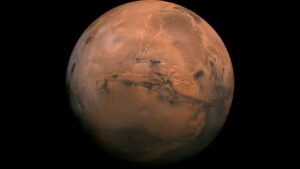
This perspective of Mars’ Valles Marineris hemisphere, from July 9, 2013, is actually a mosaic comprising 102 Viking Orbiter images. At the center is the Valles Marineris canyon system, over 2,000 kilometers long and up to 8 kilometers deep. [JPL-Caltech/NASA, cnn]
Mars is one of the most explored bodies in our solar system, and it’s the only planet where we’ve sent rovers to roam the alien landscape.
A world of extremes
Mars has a thin atmosphere composed mostly of carbon dioxide, with only trace amounts of oxygen and nitrogen. This results in a harsh environment with temperatures that can drop as low as -125°C near the poles and rise to about 20°C at the equator during a summer day. The low atmospheric pressure—less than 1% of Earth’s—means that liquid water cannot exist on the surface for long, though evidence suggests it once did. Today, water still exists in the form of ice at the poles and beneath the surface. Occasionally, winds on Mars are strong enough to create dust storms that cover much of the planet, blocking out sunlight for weeks.
Geological marvels
Mars is home to some of the most spectacular landscapes in the solar system. Olympus Mons, the largest volcano in the solar system, stands at nearly 22 km high—almost three times the height of Mount Everest. Valles Marineris, a canyon system over 4 000 km long and up to 8 km deep, dwarfs Earth’s Grand Canyon. These features suggest a geologically active past, shaped by volcanic activity, tectonic forces, and possibly even ancient rivers and lakes.
Two small potato-shaped moons
Mars is orbited by two small, irregularly shaped moons: Phobos and Deimos. They are believed to be captured asteroids from the early solar system. Unlike Earth’s Moon, both moons are lumpy and lack the gravitational strength to form a spherical shape. The moons get their names from the horses that pulled the chariot of the Greek god of war, Ares.
Exploration
Mars has been a key target for exploration for decades. NASA’s Mariner 4 flew by in 1965, followed by landers like Viking 1 and 2 and rovers such as Spirit, Opportunity, Curiosity, and Perseverance. Other nations have joined the quest—China’s Tianwen-1 landed the Zhurong rover in 2021, while Europe, India, Russia, and the UAE have sent orbiters. Future plans include missions to return samples of Mars’ soil and potential crewed missions. As technology advances, Mars remains at the forefront of space exploration, bringing us closer to uncovering its secrets—and possibly setting foot on its surface.


